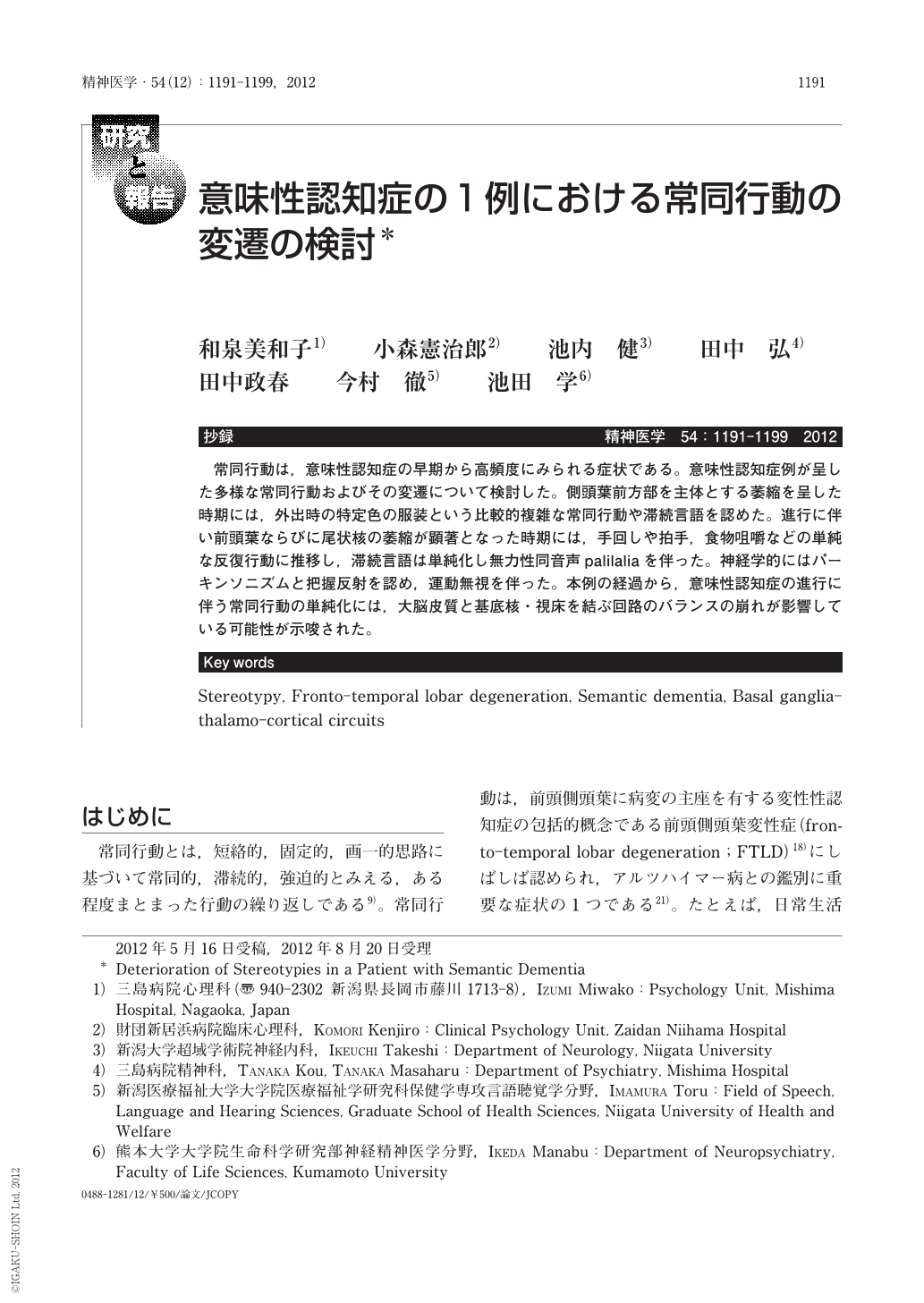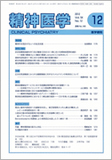Japanese
English
- 有料閲覧
- Abstract 文献概要
- 1ページ目 Look Inside
- 参考文献 Reference
抄録
常同行動は,意味性認知症の早期から高頻度にみられる症状である。意味性認知症例が呈した多様な常同行動およびその変遷について検討した。側頭葉前方部を主体とする萎縮を呈した時期には,外出時の特定色の服装という比較的複雑な常同行動や滞続言語を認めた。進行に伴い前頭葉ならびに尾状核の萎縮が顕著となった時期には,手回しや拍手,食物咀嚼などの単純な反復行動に推移し,滞続言語は単純化し無力性同音声palilaliaを伴った。神経学的にはパーキンソニズムと把握反射を認め,運動無視を伴った。本例の経過から,意味性認知症の進行に伴う常同行動の単純化には,大脳皮質と基底核・視床を結ぶ回路のバランスの崩れが影響している可能性が示唆された。
We report the case of a 72-year-old right-handed woman who showed various stereotypies as semantic dementia progressed. At initial assessment, MRI showed focal atrophies in the anterior temporal lobes, which were more severe in the left lobe. She exhibited complicated stereotypies such as wearing clothes of the same color or using the same phrases. At a three-year follow-up, MRI showed increasing atrophy in the caudate nucleus and frontal lobes in addition to that in the temporal lobes, at the same time, she displayed simpler stereotypies for example, clapping, chewing, and ‘palilalia'. These findings suggest that the simplification of the stereotypies observed in this case was associated with basal ganglia-thalamo-cortical circuit dysfunction.

Copyright © 2012, Igaku-Shoin Ltd. All rights reserved.


